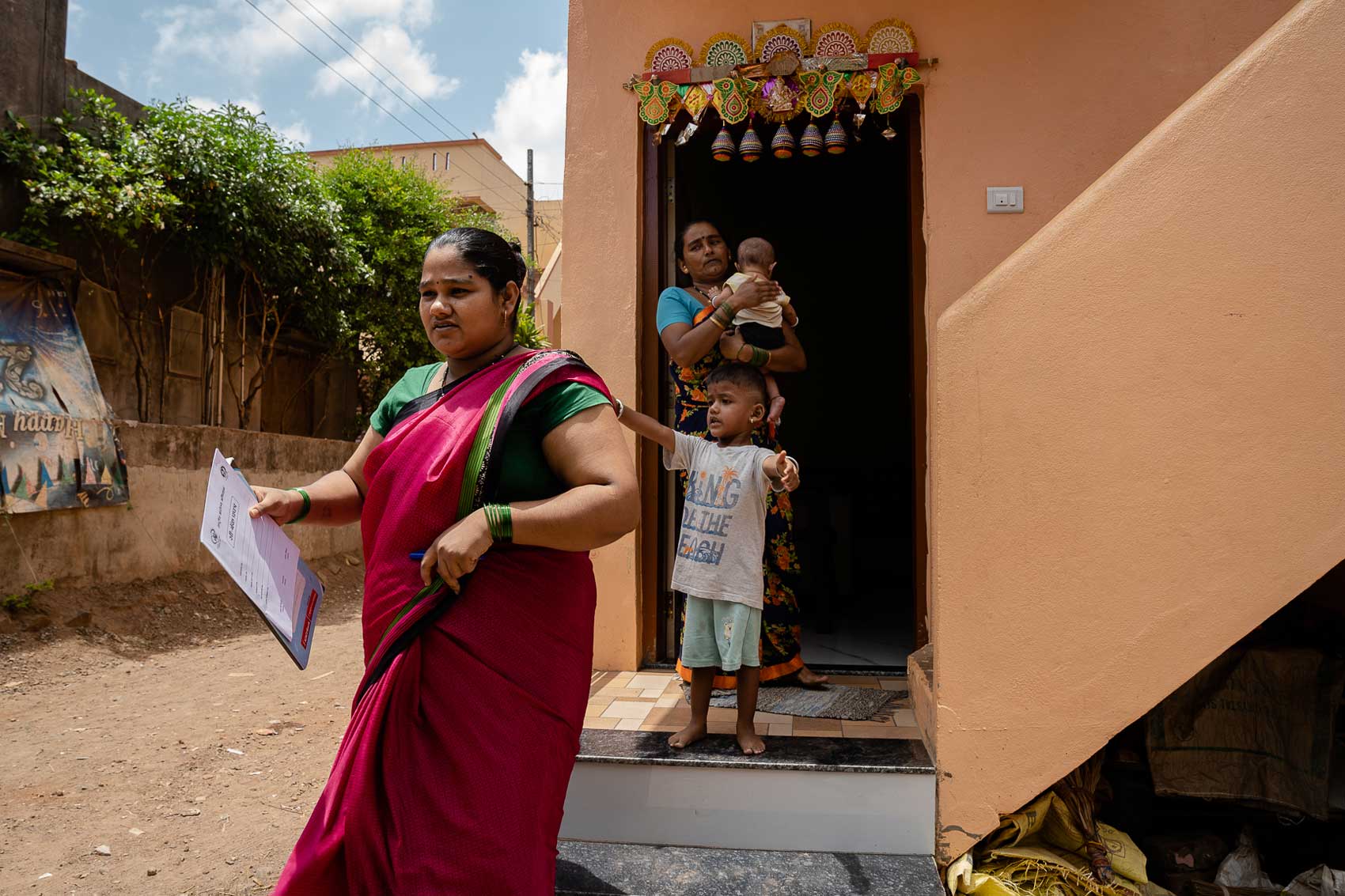
Neeta Kashid has no time to rest. The 44-year-old community health worker’s day is packed with visits to women and children in her village in India, assisting them with health emergencies, providing maternal and neonatal support, conducting surveys and immunization campaigns, and acting as the face of the Indian government’s health and sanitation drives in the area. On top of all this, she has to tend to a small farm. Despite being a full-time frontline health worker, she makes less than minimum wage and sells produce to make ends meet.
“My salary is not enough to survive,” said Kashid, “I have two school-going children. I need to pay their fees and raise them.”
Kashid is one of roughly a million health workers employed under an Indian government program that serves as a critical link between rural and poor communities and the public healthcare system. They were catapulted into the spotlight for their role in ensuring access to primary care during the COVID pandemic, winning a Global Health Leader Award from the World Health Organization. But the award spurred scrutiny of the working conditions of community health workers (CHWs) all over the world.
CHW programs have been lauded as a cost-effective way to reduce maternal and infant mortality, HIV, tuberculosis, and many other diseases over the past decades. One reason they’re cost-effective is because this overwhelmingly female workforce is poorly paid or not paid at all — in many countries they are volunteers.
A 2022 report by Women in Global Health, a global nonprofit, estimates there are 6 million female health workers who are unpaid or underpaid, and say they believe this is a conservative figure due to a shortage of available data. Their research built on a 2015 paper in Lancet which claimed that unpaid work by CHWs potentially contributed $1.4 trillion to the global economy — implying that the unpaid labor of mostly women health workers was subsidizing almost 2.5% of global GDP at the time.
“Why is it that we don’t put a price tag on this particular labor force and build that into the cost of these programs?” says Roopa Dhatt, a physician who is the executive director of Women in Global Health. “It is exploitation, and it should be called out.”
CHWs across India went on strike last year to demand better pay and formal employment status. They are part of a growing wave of organizing by health workers and experts calling for a living wage.
“[CHWs] are an anonymous donor, a nameless benefactor to everyone else,” says Madeleine Ballard, the executive director of the Community Health Impact Coalition, which advocates for the professionalization of CHWs around the world.
“The irony is a lot of these programs are funded by international organizations that have a real rhetoric around women’s empowerment. And that’s used to provide moral cover for what are, in effect, programs in which female labor is cheap.”
India’s program started in Chhattisgarh, one of the country’s poorest states, in 2002 and was adopted nationwide in 2005. “The key target was of course reducing maternal and infant mortality levels that were unacceptably high and had to be brought down,” says Sujatha Rao, a former health secretary at the Ministry of Health and Family Welfare who was involved in its launch.
When the program began, the workers’ responsibilities were limited to creating awareness, providing counsel, mobilizing the community and providing some primary medical care. Over the years, these responsibilities have increased, and so have their hours.
Then came COVID. As praise poured in from all directions for their frontline work, the workers themselves had little support. Kashid was physically assaulted by a villager for trying to enforce the government’s quarantine rules. Another CHW, 43-year-old Usha Jadhav, had a heart attack which doctors told her was due to irregular meal timings and high levels of stress from her work.
For many experts, the struggles of CHWs during the pandemic laid bare the lie behind a common trope used to justify their lack of pay: that women are innately motivated to serve their communities.
“It’s emotional blackmail,” says Margaret Odera, a Nairobi-based CHW who is working to create a national association of CHWs in Kenya. “I have had people come visit us from the USA who say ‘you community health workers are doing a great job.’ And if we say, ‘So you will pay us?’ [They say] ‘We can’t, because your job is so great that you can’t be paid.”
For Odera, the matter is straightforward. Doctors derive satisfaction from their work too, but they’re still paid; CHWs are health professionals providing vital services and should be paid accordingly.
She details the health statistics she’s gathered for her latest report to her supervisors: children who have been dewormed; children born inside the hospital and outside; children who are malnourished; mothers who are pregnant; community members with non-communicable diseases. The list goes on.
She recalls: “One time my son was asking me: ‘Mom, you go to the hospital every day. I think you’re a doctor. But at the end of the month, when I ask you to buy me something, you say you don’t have any money. What’s happening?’ And you know, I have nothing to say.”
This is an edited version of a longer article available here on The Fuller Project’s website.